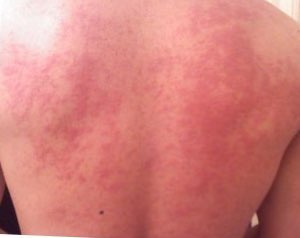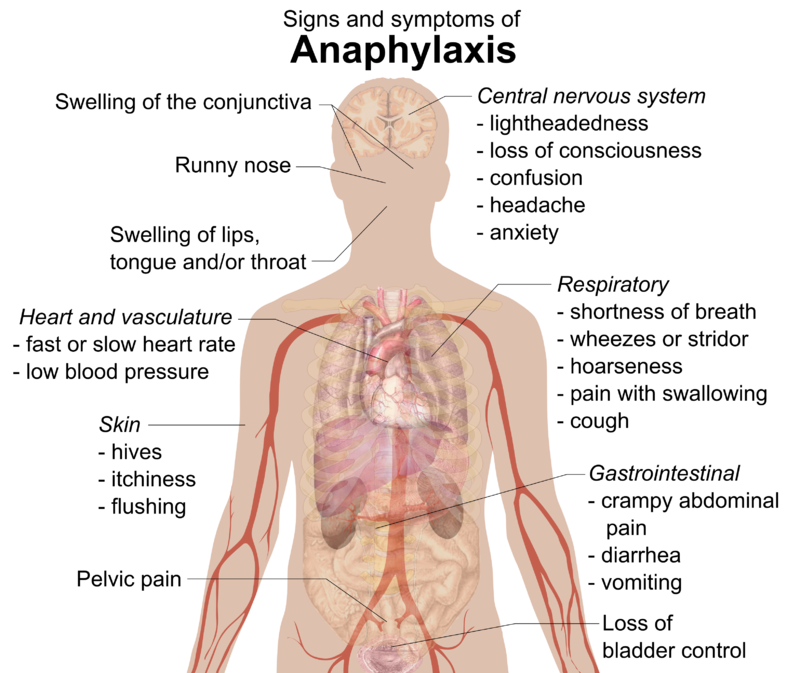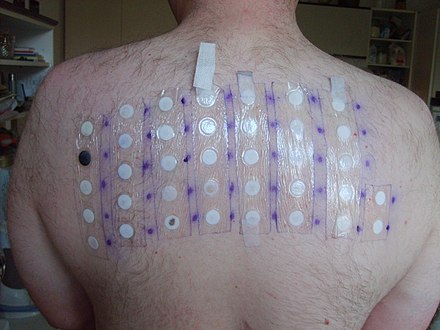Food Allergy
A food allergy is an abnormal immune response to certain foods, leading to symptoms that can range from mild to severe. This condition is a significant concern within emergency medicine, allergy, and immunology specialties. Understanding the signs, symptoms, causes, diagnostic methods, and treatments is very important for healthcare professionals, including dentists preparing for general medicine and surgery exams.
Signs and Symptoms
Food allergy symptoms typically occur within minutes to hours after exposure and can include:

- Rash
- Hives
- Itching of the mouth, lips, tongue, throat, eyes, skin, or other areas
- Swelling (angioedema) of lips, tongue, eyelids, or the whole face
- Difficulty swallowing
- Runny or congested nose
- Hoarse voice
- Wheezing and/or shortness of breath
- Diarrhoea, abdominal pain, and/or stomach cramps
- Lightheadedness
- Fainting
- Nausea
- Vomiting
Serious symptoms include respiratory tract or blood circulation issues, which can lead to anaphylaxis—a severe, potentially life-threatening allergic reaction.

Causes
Food allergies occur due to an abnormal immune response involving immunoglobulin E (IgE) antibodies reacting to specific food proteins. Common allergens include cow's milk, peanuts, eggs, shellfish, fish, tree nuts, soy, wheat, and sesame. Risk factors include a family history of allergies, vitamin D deficiency, and high levels of cleanliness.
Routes of Exposure
Allergens can enter the body through ingestion, inhalation, or skin contact. For example, inhaling airborne particles from cooking can induce respiratory effects in allergic individuals.
Pathophysiology

Food allergies are classified into three groups based on the immune response: IgE-mediated, non-IgE-mediated, and a combination of both. The acute response involves mast cells and basophils releasing histamine and other chemicals, leading to symptoms. A late-phase response can occur hours later, causing further inflammation.

Diagnosis
Diagnosis involves a combination of medical history, elimination diets, skin prick tests, blood tests, and oral food challenges.


Treatment
The primary treatment for food allergies is strict avoidance of the allergen. In cases of accidental exposure and anaphylaxis, epinephrine is the first-line treatment.

Other treatments include antihistamines to alleviate milder symptoms and steroids to reduce inflammation. Immunotherapies, such as oral immunotherapy, are being researched but are not yet widely recommended.
Prevention
Preventative strategies include early exposure to potential allergens, which may reduce the risk of developing allergies. Breastfeeding for more than four months may also prevent certain allergies in early childhood. It is essential to educate patients on avoiding known allergens and managing accidental exposures effectively.
Epidemiology
In the developed world, food allergies affect about 4% to 8% of the population, with higher prevalence in children. The incidence of food allergies appears to be increasing, particularly in industrialised nations.
This summary provides an overview of food allergies, emphasising their signs, symptoms, causes, diagnostic methods, treatments, and prevention strategies. The images included serve as visual aids to support the information presented.
Self-assessment MCQs (single best answer)
Which of the following is a common symptom of food allergies?
What is the first-line treatment for anaphylaxis caused by food allergies?
Which immunoglobulin is primarily involved in IgE-mediated food allergies?
Which of the following is a common food allergen?
Which diagnostic method involves exposing the skin to small amounts of allergens?
What chemical is primarily responsible for the itching sensation during an allergic reaction?
Which population has a higher prevalence of food allergies?
Which of the following is NOT a route of exposure for food allergens?
What is the term for swelling of the lips, tongue, eyelids, or whole face due to an allergic reaction?
Which strategy is suggested to reduce the risk of developing food allergies in early childhood?
Dentaljuce
Dentaljuce provides Enhanced Continuing Professional Development (CPD) with GDC-approved Certificates for dental professionals worldwide.
Founded in 2009 by the award-winning Masters team from the School of Dentistry at the University of Birmingham, Dentaljuce has established itself as the leading platform for online CPD.
With over 100 high-quality online courses available for a single annual membership fee, Dentaljuce offers comprehensive e-learning designed for busy dental professionals.
The courses cover a complete range of topics, from clinical skills to patient communication, and are suitable for dentists, nurses, hygienists, therapists, students, and practice managers.
Dentaljuce features Dr. Aiden, a dentally trained AI-powered personal tutor available 24/7 to assist with queries and provide guidance through complex topics, enhancing the learning experience.
Check out our range of courses, or sign up now!


